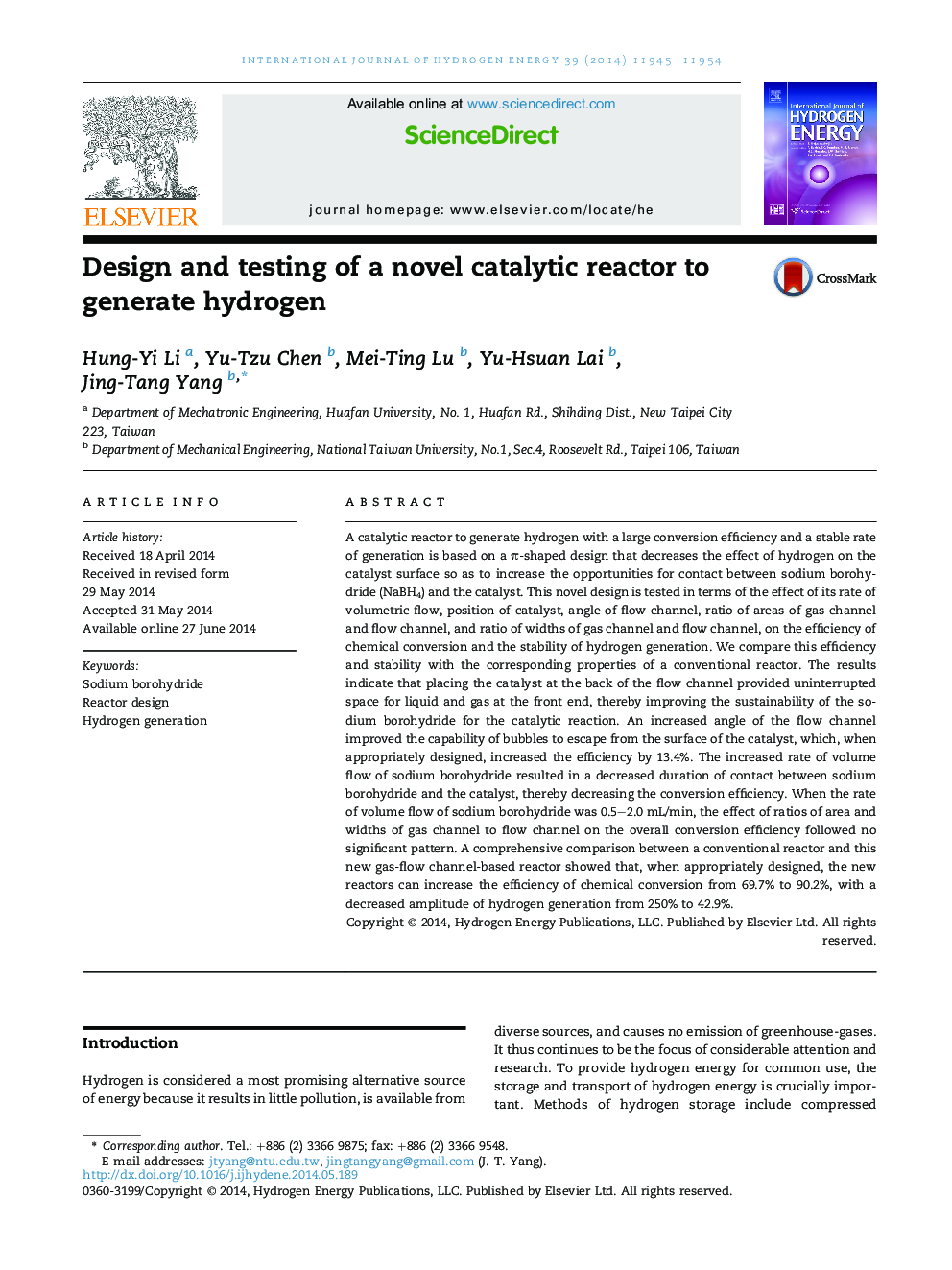| کد مقاله | کد نشریه | سال انتشار | مقاله انگلیسی | نسخه تمام متن |
|---|---|---|---|---|
| 1272993 | 1497486 | 2014 | 10 صفحه PDF | دانلود رایگان |
• A novel π-shaped reactor is proposed to generate hydrogen.
• The volumetric flow rate and the flow channel angle affect hydrogen generation.
• The catalyst placed beside the flow channel exit provides better performance.
• The efficiency of chemical conversion is increased.
• The stability of hydrogen generation is improved.
A catalytic reactor to generate hydrogen with a large conversion efficiency and a stable rate of generation is based on a π-shaped design that decreases the effect of hydrogen on the catalyst surface so as to increase the opportunities for contact between sodium borohydride (NaBH4) and the catalyst. This novel design is tested in terms of the effect of its rate of volumetric flow, position of catalyst, angle of flow channel, ratio of areas of gas channel and flow channel, and ratio of widths of gas channel and flow channel, on the efficiency of chemical conversion and the stability of hydrogen generation. We compare this efficiency and stability with the corresponding properties of a conventional reactor. The results indicate that placing the catalyst at the back of the flow channel provided uninterrupted space for liquid and gas at the front end, thereby improving the sustainability of the sodium borohydride for the catalytic reaction. An increased angle of the flow channel improved the capability of bubbles to escape from the surface of the catalyst, which, when appropriately designed, increased the efficiency by 13.4%. The increased rate of volume flow of sodium borohydride resulted in a decreased duration of contact between sodium borohydride and the catalyst, thereby decreasing the conversion efficiency. When the rate of volume flow of sodium borohydride was 0.5–2.0 mL/min, the effect of ratios of area and widths of gas channel to flow channel on the overall conversion efficiency followed no significant pattern. A comprehensive comparison between a conventional reactor and this new gas-flow channel-based reactor showed that, when appropriately designed, the new reactors can increase the efficiency of chemical conversion from 69.7% to 90.2%, with a decreased amplitude of hydrogen generation from 250% to 42.9%.
Figure optionsDownload as PowerPoint slide
Journal: International Journal of Hydrogen Energy - Volume 39, Issue 23, 4 August 2014, Pages 11945–11954
